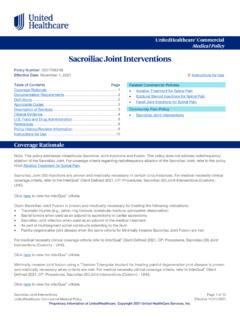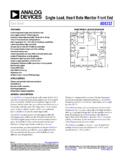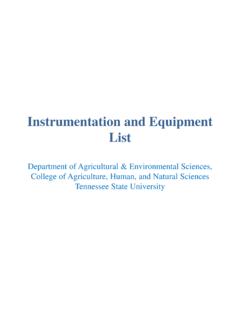Transcription of Evaluating the Safety of Energy Storage Systems UL9540A ...
1 Copyright 2018 UL LLCE valuating the Safety of Energy Storage Systems : UL9540A28 November 2018 Copyright 2018 UL LLC. All rights reserved. No portion of this material may be reprinted in any form without the express written permission of UL LLC, or as otherwise provided in BrazisAdam BarowyRobert BackstromPravinray GandhiAlvin WuCarl WangCopyright 2018 UL LLCAGENDAP rotecting Against Failure Events12 ESS Requirements in Codes and Standards3UL 9540 AUnit Level TestingInstallation Level TestingObjectives of 9450A What does it do?Cell Level TestingModule Level TestingCopyright 2018 UL LLCC opyright 2018 UL LLC Mitsubishi Materials Corporation (Japan 2011) 2 MW Sodium Sulfur system, thermal runaway Kahuku Wind farm (USA, 2012) 15 MW, Advanced lead acid battery The Landing Mall (USA, 2013) 50 kW Li-ion ESS system in a shopping mall, thermal runaway Boeing 787 Dreamliner (USA, 2013) Li-ion battery, thermal runaway Engie Electrabel (Belgium, 2017) 20 MW Li-ion facility, thermal runawayPROTECTING AGAINSTFAILURE EVENTSC opyright 2018 UL LLCFIRE Safety APPROACHNEC.
2 National Electric Code (NFPA 70)NFPA 855: Standard for the Installation of Stationary Energy Storage SystemsICC: The International Fire Code, International Residential CodeUL 1642: Lithium Batteries UL 1973: Batteries for Use in Stationary, Vehicle Auxiliary Power and Light Electric Rail (LER) ApplicationsUL 9540: Energy Storage Systems and EquipmentUL 9540A: Test Method for Evaluating Thermal Runaway Fire Propagation in Battery Energy Storage SystemsInstallation CodesBattery Safety CertificationTesting for PerformanceCopyright 2018 UL LLCP recipitating HazardInternal HeatingCell FailureThermal Runaway Internal short circuit Mechanical abuse External firePreventative MeasuresLayers of Protection PreventionMitigationFire Growth ControlLife Safety and Property ProtectionFire MitigationHazard PropagationHazard ContainmentFire ImpactSeparator FailureChemical Reactions Cathode Anode ElectrolyteMitigation Methods Tested
3 And certified components Integrated fire protection system Smoke and fire detectionLAYERS OF FIRE PROTECTION Automatic sprinklers Fire containment Fire resistance Designed safe zones Evacuation Emergency service response Other ESS units in proximity Cabling other ESS components Additional combustible materials Fire spread to adjoining rooms Deflagration, detonation Re-ignition Injuries/fatalities Property lossCopyright 2018 UL LLCC opyright 2018 UL LLCP recipitating HazardInternal HeatingCell FailureThermal Runaway Internal short circuit Mechanical abuse External firePreventative MeasuresLayers of Protection PreventionMitigationFire Growth ControlLife Safety and Property ProtectionFire MitigationHazard PropagationHazard ContainmentFire ImpactSeparator FailureChemical Reactions Cathode Anode ElectrolyteMitigation Methods Tested and certified components Integrated fire protection system Smoke and fire
4 DetectionLAYERS OF FIRE PROTECTION Automatic sprinklers Fire containment Fire resistance Designed safe zones Evacuation Emergency service response Other ESS units in proximity Cabling other ESS components Additional combustible materials Fire spread to adjoining rooms Deflagration, detonation Re-ignition Injuries/fatalities Property lossCopyright 2018 UL LLCC opyright 2018 UL LLCP recipitating HazardInternal HeatingCell FailureThermal Runaway Internal short circuit Mechanical abuse External firePreventative MeasuresLayers of Protection PreventionMitigationFire Growth ControlLife Safety and Property ProtectionFire MitigationHazard PropagationHazard ContainmentFire ImpactSeparator FailureChemical Reactions Cathode Anode ElectrolyteMitigation Methods Tested and certified components Integrated fire protection system Smoke and fire
5 DetectionLAYERS OF FIRE PROTECTION Automatic sprinklers Fire containment Fire resistance Designed safe zones Evacuation Emergency service response Other ESS units in proximity Cabling other ESS components Additional combustible materials Fire spread to adjoining rooms Deflagration, detonation Re-ignition Injuries/fatalities Property lossCopyright 2018 UL LLCC opyright 2018 UL LLCUL 9540A TEST STANDARDS copeEvaluate fire characteristics of a battery Energy Storage system that undergoes thermal runaway. Data generated will be used to determine the fire and explosion protection required for an installation of a battery Energy Storage Fire Protection of Installation to Performance of BESS Copyright 2018 UL LLCUL 9540A ADDRESSES KEY FIRE Safety CONCERNSBESS Installation Parameters Enables determination of separation distances between units to minimize unit-to-unit fire propagation Enables determination of separation distances between units and enclosure walls Enables determination of potential of fire spread to overhead cablingInstallation Ventilation Requirements
6 Quantifies deflagration potential Quantifies heat generationFire Protection (Integral or External) Evaluates fire protection strategiesFire Service Strategy and Tactics Characterizes magnitude of potential fire event Documents re-ignitions within a BESS unit under test Documents gases generatedCopyright 2018 UL LLCC opyright 2018 UL LLC Whether cell can exhibit thermal runaway Thermal runaway characteristics Gas composition (flammability) Propensity for propagation of thermal runaway Heat and gas release rates (severity/duration) Flaming/deflagration hazards Evaluation of fire spread Heat and gas release rates (severity/duration) Deflagration hazards Re-ignition hazards Effectiveness of fire protection system(s) Heat and gas release rates (severity/duration)
7 Deflagration hazards Re-ignition hazardsUL 9540 ACell Level TestModule Level TestUnit Level TestInstallation Level TestCopyright 2018 UL LLCC opyright 2018 UL LLCFire Protection ConsultantEnergy Storage SystemManufacturer/Integrator/SponsorUL 9540A USE IN INDUSTRYI nsurance IndustryBuilding OwnerOther AHJFire DepartmentUL 9540A Test MethodFire Test ReportCopyright 2018 UL thermal runaway methodology, runaway test surface temp at venting and thermal generation/composition; characterize gas flammability hazards (LFL)CELL LEVEL TESTING Thermal runaway method and parameters Temperature at venting Temperature at thermal runaway initiation Cell vent gas measurements.
8 Composition Volume Lower Flammability Limit Burning Velocity PmaxImportant DataCell Level Testing ApparatusCopyright 2018 UL LLCCELL LEVEL MOCKUP TESTC opyright 2018 UL LLCC opyright 2018 UL LLCE xample of generic Li-ion cell heated to thermal venting and thermal runaway temperature are (Vol %) ~10%CELL LEVEL MOCKUP TESTL ower Flammability Limit (LFL) = Burning Velocity (Su): 35 cm/secVolume = 70 LPmax= 91 psigCopyright 2018 UL LLCP urpose: Demonstrate the propensity for cascading thermal runaway propagation within a module Develop data on heat release rate and cell vent gas composition Document fire and deflagration hazards.
9 Thermal runaway propagation Heat release rate Deflagration hazards Cell vent gas measurements: Gas composition and volumes Hydrocarbons, H2, THC, CO/CO2, O2, Halogens, DataMODULE LEVEL TESTINGC opyright 2018 UL LLCMODULE LEVEL MOCKUP TESTC opyright 2018 UL LLCC opyright 2018 UL LLCE xample of generic li-ion propagation of thermal LEVEL MOCKUP TESTC opyright 2018 UL LLCMODULE LEVEL MOCKUP TESTGas ComponentGas TypeVolume Released Pre-Flaming (Liters) Volume Released Flaming (Liters) BromideHydrogen ChlorideHydrogen FluorideHydrogen DioxideCarbon MonoxideCarbon CyanideNitrogen Hydrocarbons(% Propane)
10 2018 UL LLCC opyright 2018 UL LLCP urpose:1. Document thermal runaway progression within a BESS unit;2. Document if flaming occurs outside the BESS unit;3. Measure heat and gas generation rates;4. Measure surface temperatures and heat fluxes in target BESS units; and5. Measure surface temperatures and heat fluxes on surrounding LEVEL TESTING Module to module thermal runaway propagation in Initiating BESS Heat release rate Gas composition and volume Wall temperatures and heat fluxes Target BESS temperatures and heat fluxes Deflagration hazards Re-ignition (on-going thermal runaway)Important DataCopyright 2018 UL LLCM ethods:1.


















